I have many people to thank for their help and support. Susan Holmes, for many ideas and lots of feedback. Ideas also came from Cathy Abraham, Terri Menzies, and Susan D. Smith. Robin Herbol provided artistic insight and a lot of support. I also wish to thank Barb Doyen, both agent and friend.
Introduction
As the parent or caregiver of a young child, you are an incredibly influential teacher. Toddlers are spongeslearning and growing from each game, book, and activity theyre exposed to. Yet a lack of playtime, a cutback on recess, and too much television are hindering childrens development. The American Academy of Pediatrics strongly urges parents to limit children under two from watching television or using the computer. So how do you entertain a toddler all day? With creative activities!
Toddlers are naturally creative. They imagine blankets are tents and their fingers are puppets. Plus, encouraging this kind of creativity is a great way to help kids understand reality. Paul Harris, a developmental psychologist says, The imagination is absolutely vital for contemplating reality, not just those things we take to be mere fantasy. According to the Wall Street Journal, more experts are studying the effects of imagination in children in the hopes that understanding how childrens cognition typically develops will also help scientists better understand developmental delays and conditions such as autism.
The importance of creativity has taken center stage lately. In a 2010 IBM poll of CEOs worldwide, creativity was identified as the single most important leadership trait for success. Even though your toddler is decades away from being a CEO, he or she can still build a foundation for a lifetime of creative success with the activities in this book.
Fantasy play and make-believe will help your child in many ways beyond the boardroom, too. Pretend play is a safe way for children to express their feelings and try out new roles. Through make-believe, your child can learn to understand and convey strong feelings such as fear or anger. Make-believe also helps develop the ability to think symbolically, and that is essential to learning math and language.
As she chatters with her dolls or stuffed animals at a tea party, or he commands his toy cars to avoid (or maybe create) an accident, your toddler is strengthening his or her expressive language skills (the words the child speaks or signs). These skills will translate into school success and the ability to develop relationships.
Although the arts have received less attention in the public schools recently, research continues to support the importance of drama, music, and art. Individuals with greater self-expression are more able to think divergently and become creative problem solvers.
How to Use This Book
The activities in this book require little advance planning and few (if any) materials. And it does not matter where your child is developmentally; you will find ideas to meet her needs. The appendix is a useful guide, especially if you are seeking activities to promote a specific skill.
This book is designed to make it easy for you to find just the right activity for your child. Each activity includes a suggested age group and a time estimate. Activities are easy to follow, with a clear list of materials needed and step-by-step directions.
Activities that may pose any safety concern include a warning and/or suggestions for keeping your child safe. Some activities do use small items or potential choking hazards, such as Styrofoam and balloons. All activities in this book should be done under the direct and constant supervision of an adult. Carefully use your best judgment in selecting safe activities for your child.
Chapter 1
Toddlers 101
What Are Toddlers Like?
Toddlerhood, which encompasses the ages of eighteen months to three years, is an exciting period of your childs development. You have most likely noticed that shes growing rapidly and quickly acquiring many new skills and abilities. It may seem to you that just yesterday she was an infant, very passive and dependent on you. Now you can see that she is on the threshold of becoming a full-fledged individual.
Your toddler is truly caught in a time of transition. She is just starting to develop her own sense of self. At first, her only knowledge of her identity was that she was united with you. During the first few months of her life, she developed an attachment to you (and you with her). Her first relationship was with you. Now, however, she is slowly starting to see herself as a separate person, and soon she will develop new relationships.
Togetherness This time of becoming an individual includes separation and can be difficult for toddlers. However, when she knows that she can rely on you for love, comfort, and reassurance, she will be emboldened to take those first tentative steps away from you. In the meantime, you can assume youll be doing all of the activities in this book side by side!
Separation Anxiety
Many toddlers begin to experience some feelings of separation anxiety anywhere from the eighth to twenty-fourth month. If your child is experiencing separation anxiety, she may become clingy and resistant to any separation. She may throw a temper tantrum and exhibit fear and anxiety around other people, even those who are familiar.
You may not be able to prevent your child from experiencing separation anxiety, but the way you respond can make things easier for all:
 Be sympathetic.
Be sympathetic.
 Continue to be available to your child for comfort and reassurance.
Continue to be available to your child for comfort and reassurance.
 Whenever possible, avoid forcing her into situations that will be difficult.
Whenever possible, avoid forcing her into situations that will be difficult.
When your child feels safe and secure, she will outgrow separation anxiety.
Emotional Volatility
As your toddler develops, she acquires many new skills. Along with physical and cognitive development, she is also maturing emotionally. You may find that your toddlers emotions are very close to the surface. Like flipping a light switch, she may go from happy and calm to fussy and agitated. At this age, she is likely to be easily overwhelmed and frustrated. Your calm, patient demeanor will be beneficial as you help her cope with and appropriately express her emotions.
Desire for Independence
You have probably noticed your toddler beginning to show a desire for independence. No longer completely dependent on you, she may even resist you during care-giving routines. She may start to insist, Me do it, or Let me try. Your child is developing autonomy. It is important that you give her opportunities to have some independence and to be sure to recognize both her efforts and her accomplishments. Many of the activities in this book will help you do just that.
Desire for Power
Along with this new desire for independence comes the wish for some degree of control and power. Your toddler is starting to learn that she can influence both the events and the people around her. Feeling a sense of autonomy and power is an important emotional milestone. Engaging her in activities that promote creativity and role-playing is a good way to show your child how to accept and manage these new emotions. Children who are restricted in this area can become doubtful of their abilities and may be reluctant to try things or act independently later on.

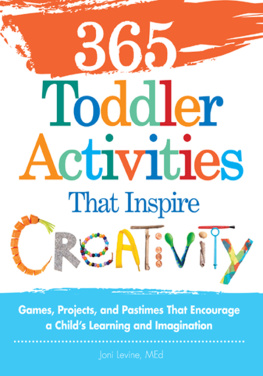
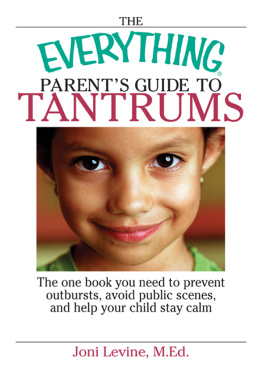

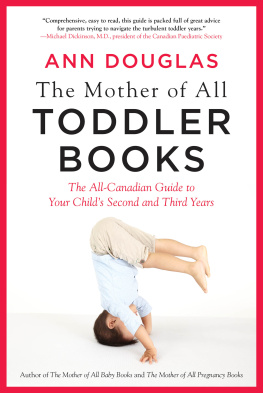

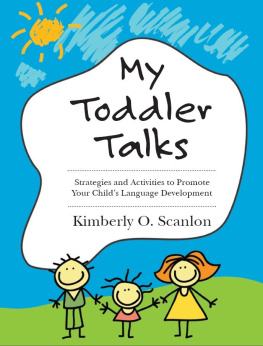

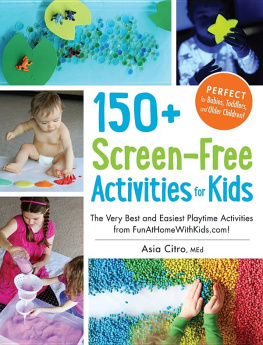
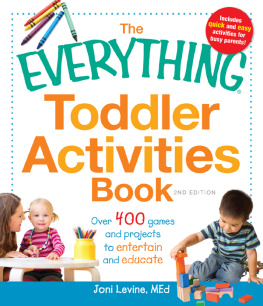


 Be sympathetic.
Be sympathetic.